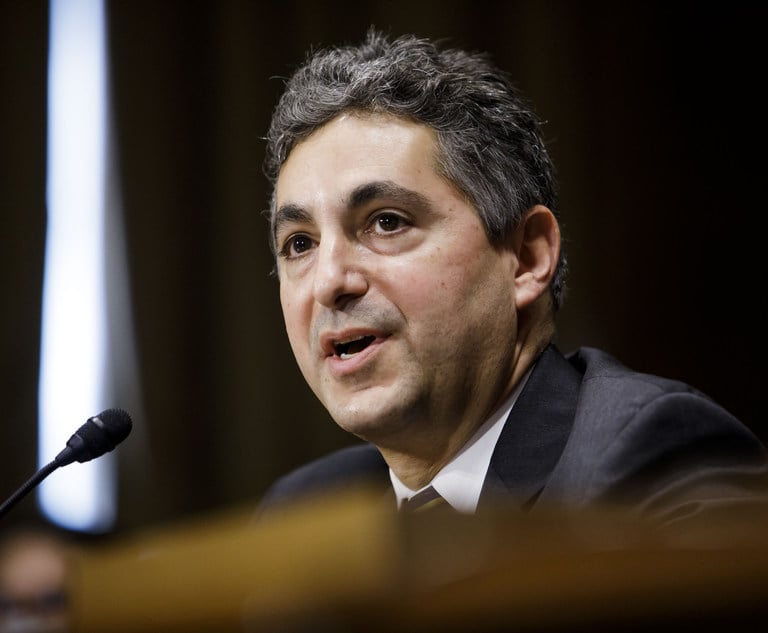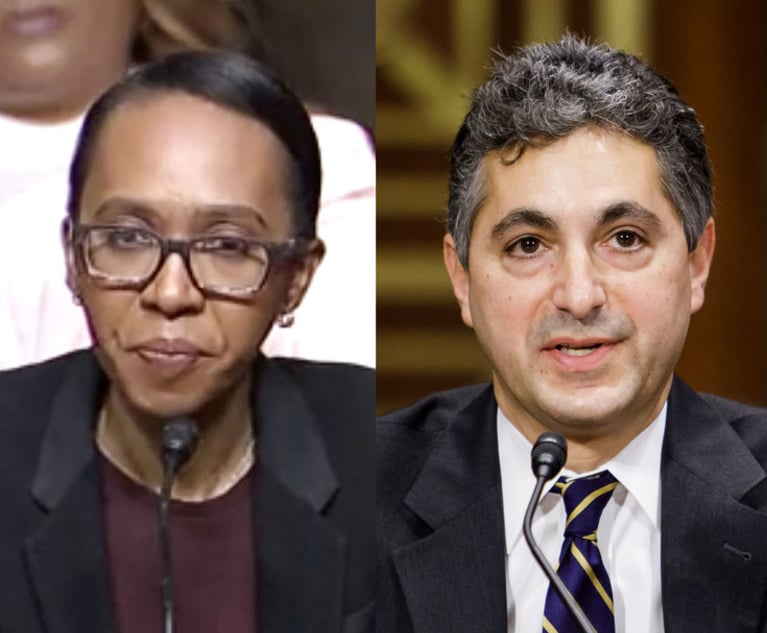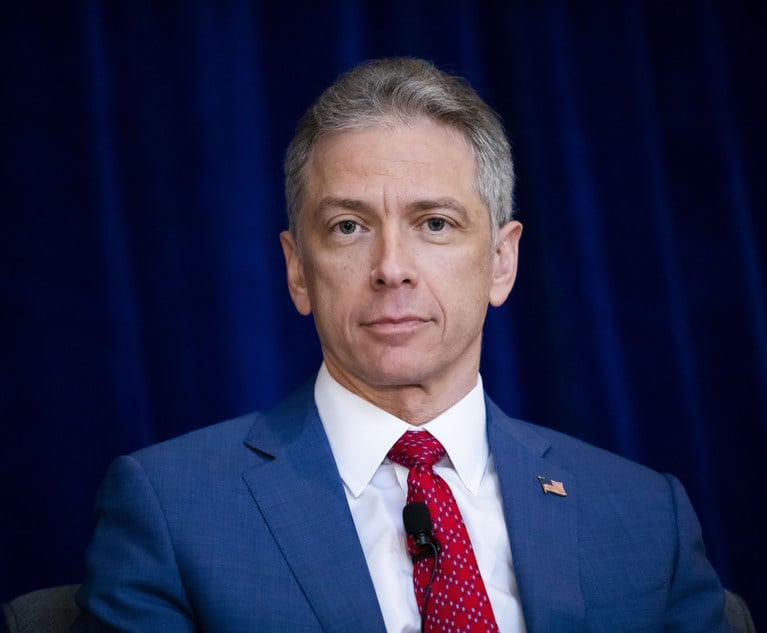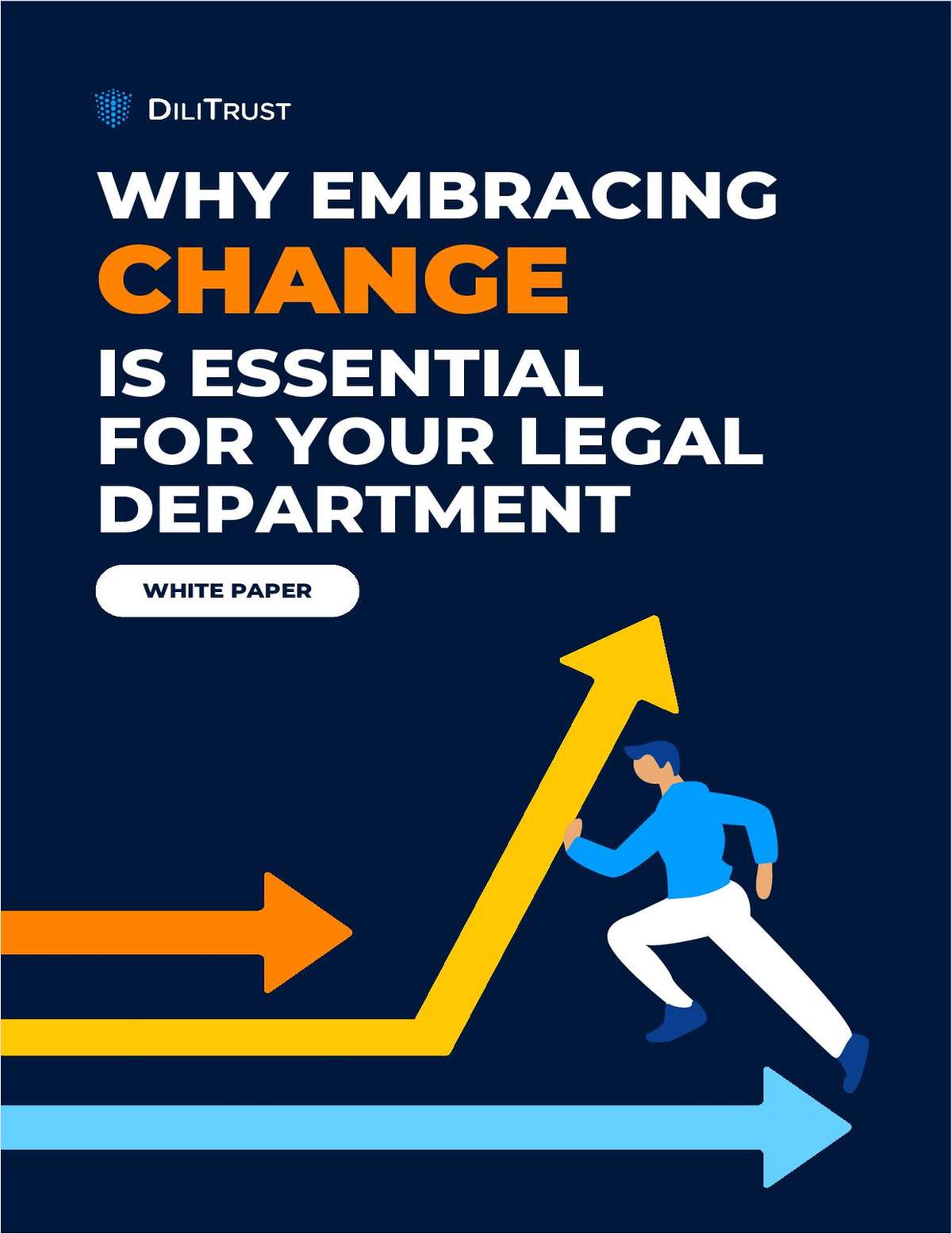Skilled in the Art: Fiber Optic Faceoff in SoCal + A Second Look at Return Mail. Plus, Stanford Asks: Who Moved My Claim Construction?
Viasat's and Acacia Communications' hot-button, high-stakes IP trial kicked off opening statements today, and Ken Fitzgerald of Fitzgerald Knaier and Michael Albert of Wolf, Greenfield & Sacks had some choice words for their opponents' clients.
June 11, 2019 at 11:25 PM
13 minute read
Welcome to Skilled in the Art. I'm Law.com IP reporter Scott Graham. IP has arrived on my home turf of North San Diego County, so I was on hand today for opening statements in Viasat v. Acacia Communications, a contract and trade secret dispute in which Viasat is seeking more than $300 million. I've got a quick rundown of opening statements. Plus I've got some second-day thoughts on the the Supreme Court's Return Mail decision, and a look at Stanford's concerns about floating claim construction standards. As always you can email me your thoughts and follow me on Twitter.
|➤➤ Would you like to receive Skilled in the Art as an email? Sign up here.

Fitzgerald Knaier's Ken Fitzgerald, left, and Wolf Greenfield's Michael Albert.
|Viasat, Acacia Face Off Over Fiber Optics
Maybe it was the placid surroundings of Vista, California. Or maybe it had more to do with the quietly imposing presence of San Diego Superior Court Judge Timothy Casserly. Whatever the reason, Viasat's and Acacia Communications' hot-button, high-stakes IP trial is off to the most polite of starts. Four hours of opening statements were completed Monday without a single objection or even so much as a raised voice.
But that doesn't mean Viasat counsel Ken Fitzgerald of Fitzgerald Knaier and Michael Albert of Wolf, Greenfield & Sacks didn't have some choice words for their opponents' clients.
“This is a simple case about theft,” Fitzgerald said at the outset, adding moments later, “This is also a case about lying.”
By the end of his presentation he'd shown the jury video of Acacia Co-founder Christian Rasmussen dodging sticky deposition questions and had accused the company's CLO of falsely denying that Acacia uses Viasat's proprietary technology in its newest fiber optics products.
Albert, meanwhile, said the case isn't a whodunit about trade secrets, but a simple licensing dispute. “We're not arguing about what Acacia did,” Albert said. “We're arguing about what it was allowed to do.”
He also slagged the chips designed by Viasat as just “a component in a component” and claimed they caused Acacia's transceivers to overheat and nearly catch fire.
The dispute stems from a collaboration 10 years ago in which Acacia hired Viasat to help design the chips used in Acacia's 100-gigabit-per-second fiber optic modems. Under the parties' license agreement, Viasat provided confidential coding structure for, among other things, soft decision forward error correction (SDFEC), a method of encoding and decoding packet data to ensure against corrupted transmissions. All went fine until Acacia began rolling out next-generation products without paying royalties on them.
Fitzgerald described Monday how Viasat started out as a San Diego-based defense contractor and has since branched out to internet infrastructure. SDFEC was developed in the company's Cleveland division and licensed to Acacia in 2009.
By 2013 Acacia executives were trying to figure out how to put out a new generation of transceivers. Fitzgerald displayed an internal email from Acacia founding board member Eric Swanson: “Doesn't backward compatible require us to use Viasat FEC?” wrote Swanson, who stepped down from Acacia's board last week. “That would suck.”
Bhupen Shah, the company's vice president of engineering, described the Viasat license in an email as “a sword over our head.”
Fitzgerald alleged that Acacia then improperly used Viasat's technology and its specifications to design its next generation of transceivers. Under the license, “They're not supposed to be looking at the specifications. They're not supposed to be looking at the products.”
He told jurors that Rasmussen had emailed the SDFEC specifications to his engineers from his personal email account. “I don't want to mail it from the company account, just in case silly things should happen down the road,” Rasmussen had written in the email.
Fitzgerald played extended video from Rasmussen's deposition where he was confronted with the email. “I don't know why I sent it from my Yahoo account,” Rasmussen said. “Sitting here reading it, I don't know what it means.”
With these revelations, Acacia's defense has evolved from denying that it was using Viasat's technology. “Now they're claiming they had a license,” Fitzgerald said. But their reading of the license agreement is “a contrivance of the lawyers in this litigation.”
He said Viasat wants $34 million in unpaid royalties, $13 million in late fees, and $288.9 million in damages that he said is “directly attributable” to trade secret misappropriation.
After hearing his client trashed for more than two hours, Wolf Greenfield's Albert sought to humanize Acacia. He said the company's fiber optic advancements have super-charged internet transmission speeds. “If you want to download Game of Thrones, that's what allows you to do it in ultra-high definition,” he said.
He also emphasized repeatedly that Acacia has continued to pay royalties on sales of its first generation of transceivers, even as in the midst of their litigation.
Viasat's SDFEC technology is nice, “it cleans up the signal a little,” Albert said, but it's essentially “an add on.”
“It was very good for products that went to market in 2009,” he said. But it's not “what drives the value” of Acacia's transceivers.
Acacia had to redesign SDFEC to make its transceivers smaller and more energy efficient. It had to use some of the same “formatting choices” to make the products backward compatible, and it made use of common terminology like “clocks.” But Acacia came up with the new design on its own, so it owed no royalties, Albert said.
“Where was Viasat?” he asked. “They were back in Cleveland while Acacia was developing these products.”
Plus, he said, there's no evidence that Viasat considered its designs “trade secrets” until the litigation began, and Acacia certainly didn't share them with anyone else. “You'll hear no evidence that Acacia got any information that Viasat didn't intend to give them,” Albert said.
As for the $315 million that Acacia is demanding? That's “twice the profit Acacia has made in its entire history.” He told jurors the licensing contract limits each side's liability to the $13 million Acacia has paid in actual royalties.
|
Stanford: Infringement Can't Evolve Over Life of Patent Claim
Stanford University and dietary supplement maker ThermoLife International are not happy about the $1.3 million attorney fee bill they've been stuck with in a patent infringement case.
Both are petitioning for rehearing of a Federal Circuit decision last month that upheld a decision by U.S. District Judge Janis Sammartino. She awarded exceptional case fees to Hi-Tech Pharmaceuticals and Vital Pharmaceuticalson the ground that Stanford and ThermoLife sued first and asked questions later, including whether the accused products actually infringe. Hi-Tech crowed about “driving a stake into the ground in our relentless fight against patent trolls.”
Sammartino didn't actually adjudicate infringement—she held a bench trial on validity—but she found that the blitzkrieg of 81 lawsuits, many of which settled for less than the cost of litigation, combined with a plaintiff expert's concession, justified an award of fees.
Stanford, which developed the patents, and its licensee ThermoLife are each demanding further review. “The panel's ruling forever changes the standard for pre-filing investigation by requiring the retention of infringement experts pre-suit,” Greg Collins of Kercsmar & Feltus writes in ThermoLife's petition for rehearing.
Stanford's argument is more nuanced. It argues that Sammartino and the Federal Circuit have set a moving target for infringement.
The primary asserted patent claim recites a method of administering L-arginine or equivalent in an amount “sufficient to increase the level of nitric oxide production” in humans. The specification suggests the dosage “will generally range from about 0.5 to 5 g, more usually from about 1 to 3 g.”
Fifteen years ago, when Stanford and a previous licensee sued Herbalife over the same patent, U.S. District Judge Judge James Ware declined to set a fixed minimum dosage. He construed the claim language as variable, depending on for example whether the supplement was being administered to children or adults. Sammartino, on the other hand, dinged ThermoLife and Stanford because their expert admitted that more recent studies show at least 1 gram is needed to increase NO levels. Simple testing of the accused products would have shown less than that amount.
Federal Circuit Judge Richard Taranto said Sammartino didn't abuse her discretion. “It is generally to be expected that typical administration would come to reflect what science revealed as the amount needed for the effect,” Taranto wrote.
“With the panel's decision, patent owners and inventors cannot know what will or will not be protected over the life of their patent,” Pillsbury Winthrop Shaw Pittman partner Bill Atkins writes in Stanford's petition for rehearing.
Atkins argues that Sammartino effectively construed the patent claim to require a 1 gram minimum. But, he notes, the Federal Circuit said in no less than Phillips v. AWH that claims are construed “as of the effective filing date of the patent application.”

More on Return Mail
The PTAB was back in the Supreme Court spotlight on Monday. The justices ruled 6-3 that the government is not a “person” who may petition for IPR, CBM or PGR.
“The court's decision confirms that federal agencies do not get an extra chance to challenge privately held patents under the AIA,” said Covington & Burling partner Beth Brinkmann, who argued the case for patent owner Return Mail.
A few second-day thoughts about Return Mail v. USPS:
➤ More division on patent law. Remember when Supreme Court patent decisions were always unanimous, or maybe 8-1? Prior to Justice Neil Gorsuch's arrival, the previous seven patent decisions were 8-0, 7-1, 7-1, 7-0, 8-0, 6-2 and 8-0. The court ruled 9-0 in Amgen v. Sandoz immediately after Gorsuch joined the court. Since then it's been 7-2, 5-4, 7-2, 9-0 and 6-3. I'm not saying the reason is Gorsuch per se, but it seems that for the court as now constituted, even a relatively inconsequential case like Return Mail requires some heavy lifting. (H/T to Lisa Ouellette's list of Supreme Court Patent Cases at Written Description.)
➤ How much is a handful? I mentioned in my story that Return Mail had characterized the government as having filed only “a handful” of PTAB cases under the AIA. Unified Patents COO Shawn Ambwani points me toward an at least partial list on his company's database. I'd say it's a little more than a handful, though certainly less than a deluge. Ambwani notes that while the U.S. government is now shut out from petitioning, the same isn't necessarily true of foreign governments.
➤ More fodder for sovereign immunity. Ropes & Gray partner Matt Rizzolopredicted Monday afternoon that states would find ammunition for their sovereign immunity arguments in Justice Sonia Sotomayor's Return Mail opinion. By nightfall, the University of Minnesota had already filed its FRAP 28(j) letter with the Federal Circuit, where the issue is pending right now. Wolf, Greenfield & Sacks partner Michael Albert (yep, it's been a busy week for him) notes that Sotomayor described AIA proceedings as “full-blown adversarial proceedings” that are “overseen by” the PTO. That doesn't jibe with his opponents' claims that IPRs are “actions brought by the Federal Government” and “the USPTO's own proceeding.”
➤ Section What? George Washington University law professor Dmitry Karshtedt points out an oddity in Tuesday's decision. The majority opinion states that the federal statute on government immunity from patent claims, Section 1498(a), “restricts a patent owner who sues the Government to her 'reasonable and entire compensation' for the Government's infringing use; she cannot seek an injunction, demand a jury trial, or ask for punitive damages, all of which are available in infringement suits against nongovernmental actors under Section 271(e)(4).” Section 271(e)(4) is a niche provision that applies only to drugs and veterinary biologics. Karshtedt thinks the court must have had in mind Sections 283 and 284.
It's the second “what?” citation in a patent decision this year. Rizzolo points to a passage in Helsinn Healthcare that refers to “Section 101(i).” Section 101 has no subsections, Rizzolo points out. He's pretty sure the court meant Section 100(i).
|
Unified Steps Up Cybersecurity Efforts
Speaking of Unified Patents, the organization is stepping up its efforts in the cybersecurity area by launching a Cybersecurity Protection Zone. Inaugural members include Cisco Systems Inc., McAfee LLC, Palo Alto Networks Inc., Rapid7 and Red Hat Inc.
“We've seen more and more assertions specific to that area,” said Unified's Ambwani, whose organization is dedicated to deterring suits by non-practicing entities. Last year Unified ranked behind only Apple, Samsung, Intel and Google for number of IPR petitions filed.
Membership zones already include content, cloud, financial transactions, internet of things, retail, transport and mobile. Cybersecurity crosses into many of those areas, but with the new zone and new members Unified aims to step up deterrence in the area.
“We are pleased to name many of the biggest brands in the industry as members of Unified Patents' new Cybersecurity Protection Zone, as this aids both large and small organizations in coming together to fight the sustained IP risk in the industry,” Unified CEO Kevin Jakel said in a written statement.
“We look forward to working with Unified and the Cybersecurity Zone to reduce frivolous patent claims against cybersecurity companies,” Rapid7 CEO Corey Thomas said, “so that we can all continue to focus on preventing cyberattacks and addressing the cybersecurity challenges facing our customers.”
That's all from Skilled in the Art this week. I'll see you all again on Friday.
This content has been archived. It is available through our partners, LexisNexis® and Bloomberg Law.
To view this content, please continue to their sites.
Not a Lexis Subscriber?
Subscribe Now
Not a Bloomberg Law Subscriber?
Subscribe Now
NOT FOR REPRINT
© 2024 ALM Global, LLC, All Rights Reserved. Request academic re-use from www.copyright.com. All other uses, submit a request to [email protected]. For more information visit Asset & Logo Licensing.
You Might Like
View All
Skilled in the Art With Scott Graham: I'm So Glad We Had This Time Together

Design Patent Appeal Splinters Federal Circuit Panel + Susman Scores $163M Jury Verdict + Finnegan Protects Under Armour's House
Trending Stories
- 1For Safer Traffic Stops, Replace Paper Documents With ‘Contactless’ Tech
- 2As Second Trump Administration Approaches, Businesses Brace for Sweeping Changes to Immigration Policy
- 3General Warrants and ESI
- 4GC Pleads Guilty to Embezzling $7.4 Million From 3 Banks
- 5Authenticating Electronic Signatures
Who Got The Work
Michael G. Bongiorno, Andrew Scott Dulberg and Elizabeth E. Driscoll from Wilmer Cutler Pickering Hale and Dorr have stepped in to represent Symbotic Inc., an A.I.-enabled technology platform that focuses on increasing supply chain efficiency, and other defendants in a pending shareholder derivative lawsuit. The case, filed Oct. 2 in Massachusetts District Court by the Brown Law Firm on behalf of Stephen Austen, accuses certain officers and directors of misleading investors in regard to Symbotic's potential for margin growth by failing to disclose that the company was not equipped to timely deploy its systems or manage expenses through project delays. The case, assigned to U.S. District Judge Nathaniel M. Gorton, is 1:24-cv-12522, Austen v. Cohen et al.
Who Got The Work
Edmund Polubinski and Marie Killmond of Davis Polk & Wardwell have entered appearances for data platform software development company MongoDB and other defendants in a pending shareholder derivative lawsuit. The action, filed Oct. 7 in New York Southern District Court by the Brown Law Firm, accuses the company's directors and/or officers of falsely expressing confidence in the company’s restructuring of its sales incentive plan and downplaying the severity of decreases in its upfront commitments. The case is 1:24-cv-07594, Roy v. Ittycheria et al.
Who Got The Work
Amy O. Bruchs and Kurt F. Ellison of Michael Best & Friedrich have entered appearances for Epic Systems Corp. in a pending employment discrimination lawsuit. The suit was filed Sept. 7 in Wisconsin Western District Court by Levine Eisberner LLC and Siri & Glimstad on behalf of a project manager who claims that he was wrongfully terminated after applying for a religious exemption to the defendant's COVID-19 vaccine mandate. The case, assigned to U.S. Magistrate Judge Anita Marie Boor, is 3:24-cv-00630, Secker, Nathan v. Epic Systems Corporation.
Who Got The Work
David X. Sullivan, Thomas J. Finn and Gregory A. Hall from McCarter & English have entered appearances for Sunrun Installation Services in a pending civil rights lawsuit. The complaint was filed Sept. 4 in Connecticut District Court by attorney Robert M. Berke on behalf of former employee George Edward Steins, who was arrested and charged with employing an unregistered home improvement salesperson. The complaint alleges that had Sunrun informed the Connecticut Department of Consumer Protection that the plaintiff's employment had ended in 2017 and that he no longer held Sunrun's home improvement contractor license, he would not have been hit with charges, which were dismissed in May 2024. The case, assigned to U.S. District Judge Jeffrey A. Meyer, is 3:24-cv-01423, Steins v. Sunrun, Inc. et al.
Who Got The Work
Greenberg Traurig shareholder Joshua L. Raskin has entered an appearance for boohoo.com UK Ltd. in a pending patent infringement lawsuit. The suit, filed Sept. 3 in Texas Eastern District Court by Rozier Hardt McDonough on behalf of Alto Dynamics, asserts five patents related to an online shopping platform. The case, assigned to U.S. District Judge Rodney Gilstrap, is 2:24-cv-00719, Alto Dynamics, LLC v. boohoo.com UK Limited.
Featured Firms
Law Offices of Gary Martin Hays & Associates, P.C.
(470) 294-1674
Law Offices of Mark E. Salomone
(857) 444-6468
Smith & Hassler
(713) 739-1250










